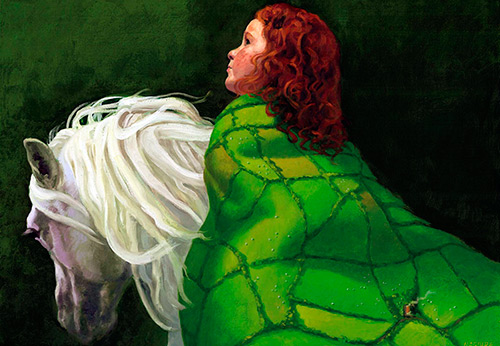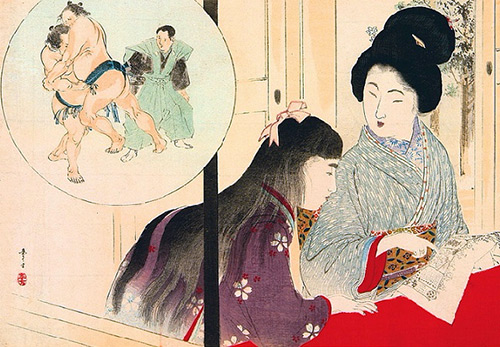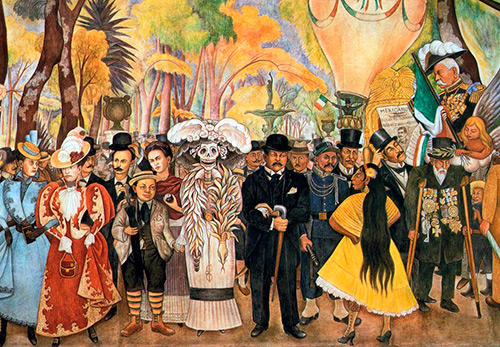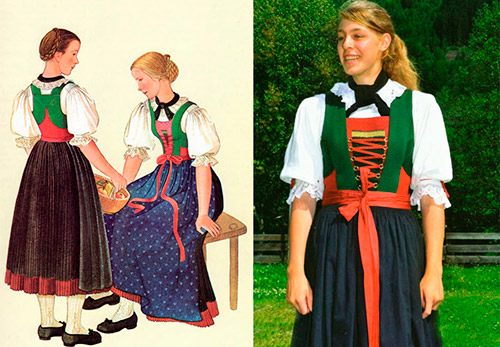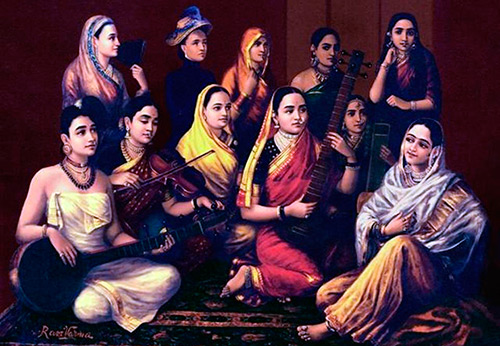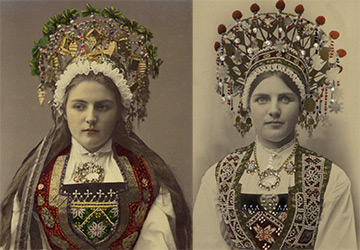Style
Belarusian national costume - photo and history
The Belarusian national costume is the traditional dress of peasants, pagan symbols (ornament) as a decoration and a casual hat from Transylvania.
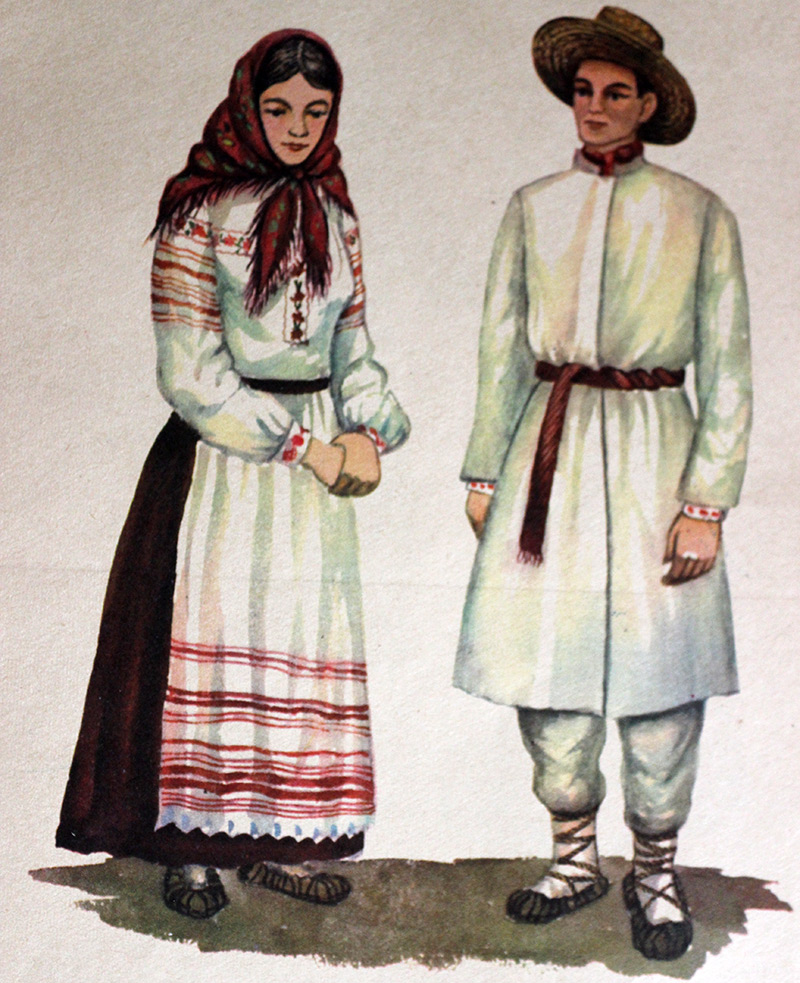
Belarusian folk costume
Illustration from the book
"Belarusian folk clothes", Minsk, 1975
The national or folk costume of Belarus is formed, like the national costumes other European nations, in the 19th century based on folk traditional clothing. Clothes worn by peasants for centuries.
This is the difference between the folk costume - it is the clothes of ordinary people, which have changed little over the centuries. In contrast to the costume of aristocrats, which most often changed according to the common European fashion.
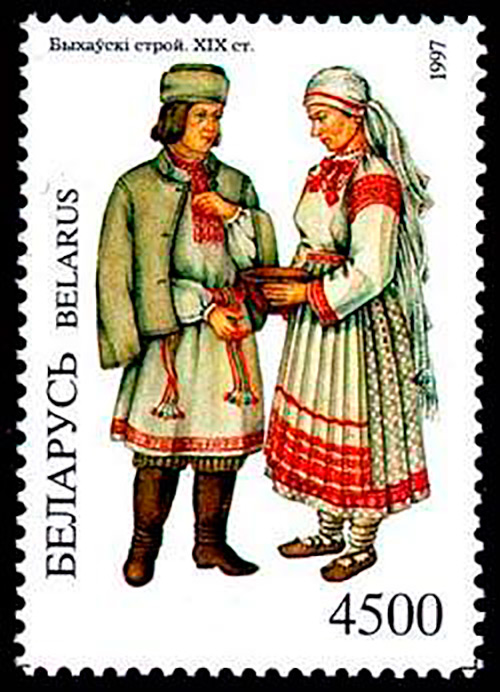
Belarusian folk costume
Brand
The main fabric that was used in the sewing of the Belarusian folk costume is flax. Just like other peoples, among the first materials for making clothes, in addition to flax, was wool. The Belarusian folk costume was decorated with ornaments. At the same time, traditionally, the most elegant in its decor was a woman's costume. In the men's suit, ornaments were most often embroidered only on the shirt.
Men's suit
The Belarusian folk costume for men consisted of pants and a shirt. Summer trousers were most often linen, winter ones were sewn from cloth. In Belarus, men's trousers were called “nagavitsy”, “hanavitsy”, “ports”. The names depended on the region of the country where the pants were worn. The pants in each region had their own "little features". For example, in the Vitebsk region in the 19th century, there were trousers with a round insert, very wide at a step. And such trousers were called "croquet" or "croquami". Most likely, from the word "step" - in Belarusian "croc".
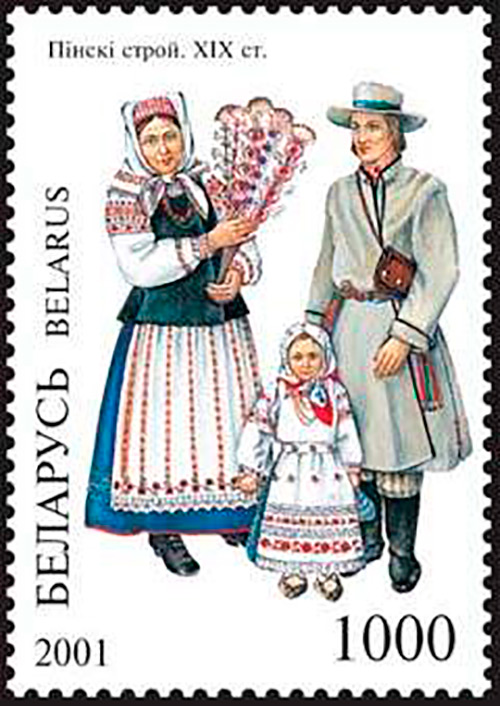
Belarusian folk costume
Brand
And this is also a feature of the folk costume. In each region, even within one country, the clothes of peasants, with a general similarity, have their own slight differences. Thus, the folk costume of any country is, in a way, the arithmetic average of all variants of folk clothing from different regions of a given country.
A men's shirt in a Belarusian folk costume was traditionally sewn from homespun cloth. Decorated with ornaments. The shirt was worn outside and belted.
The men's outerwear was the retinue. A suite is a dress with a straight robe-like cut. Most often, a straight-cut suite was worn on the territory of Belarus, but there are also options for a suite expanding downward. The retinue, like the shirt, was worn with a belt. In winter, the outer garment was a casing.
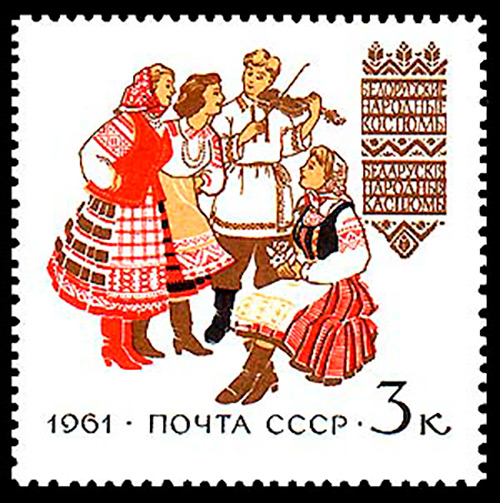
Belarusian folk costume
Brand
As for the belts, in the Belarusian folk costume men's clothing has always been with a belt. At the same time, the belt, for example, in clothing of the 16th century had a completely practical purpose. In those days, a small pouch was attached to the belt, in which money and other small items were kept.
Belts could be both woolen and half-woolen - the basis of such a fabric is linen, and wefts (transverse threads of the fabric) - woolen. At the same time, knitted and woven belts were also worn. The belts were decorated with ornaments.
Men's headdresses in the Belarusian folk costume were a winged hat and a magerka. In winter, they wore fur hats, for example, ablavukha. The Wing Hat is a wide brim hat. It could be either straw or felt.
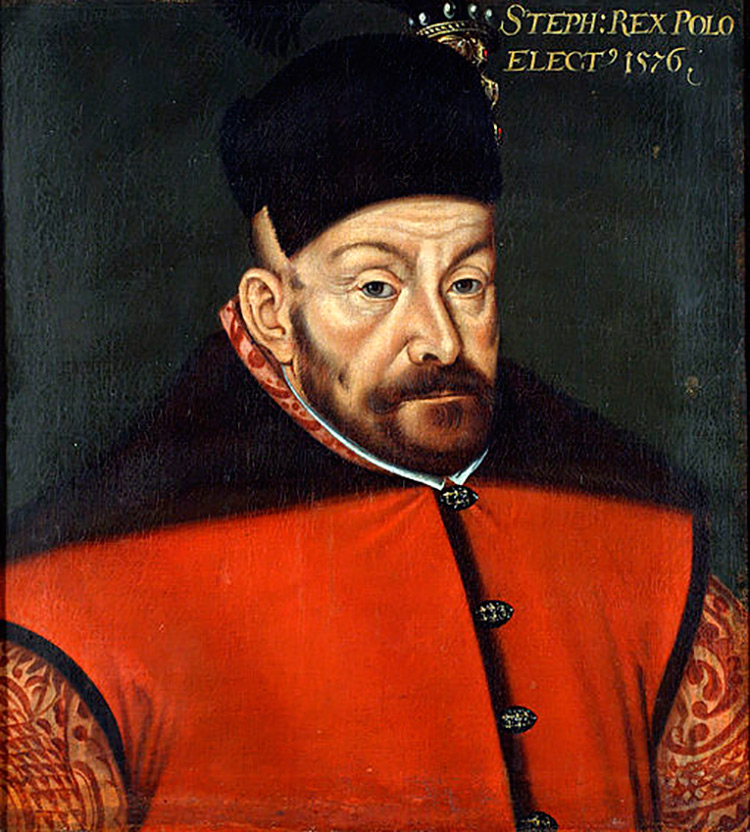
Portrait of Stephen Bathory, 1576
Magerka is a borderless felt hat, most often white. Such a hat was worn not only in Belarus, but also in Ukraine and Poland. Its name comes from the word "magur" - Hungarian. It is believed that such a hat appeared in the 16th century during the reign of the Polish King and Grand Duke of Lithuania Stefan Batory. Since then, the magera hat has been registered in the Belarusian folk costume.
King Stephen Bathory himself was from Hungary and not from anywhere, but from Transylvania itself. His niece was Elizabeth Bathory, who went down in history as the bloody Lady Bathory.
But King Stefan Bathory went down in history as a completely positive character. By the way, the Transylvanian Stefan Batory spent the last years of his life in the Belarusian city of Grodno, where in those years his royal residence was located.
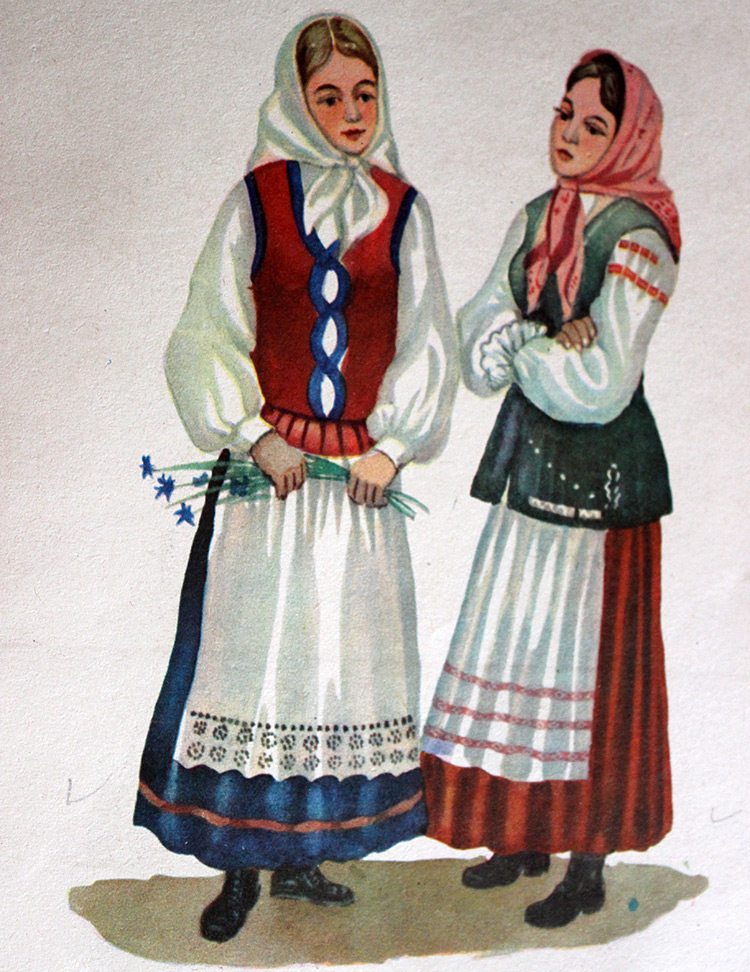
Belarusian folk costume
Illustration from the book
"Belarusian folk clothes", Minsk, 1975
Woman suit
The elements of the Belarusian women's folk costume were a shirt, which was richly decorated with embroidery, a skirt, a sleeveless jacket and an apron.
Skirts in different regions of Belarus were called differently. Also, the names of the skirts could depend on their color. So, an absolutely white skirt was called "bialak", a blue skirt - "blue". The names of the skirts could also depend on the materials, for example, a skirt made of printed fabric was called "printed".
Woolen skirts, which were most often worn in winter, were called andarak. The word itself most likely comes from the German word "unterrock" - this is how the underwear was called in German. This word was originally borrowed by the Poles, and then came into the Belarusian language, turning into andarak - the name for a woolen skirt.
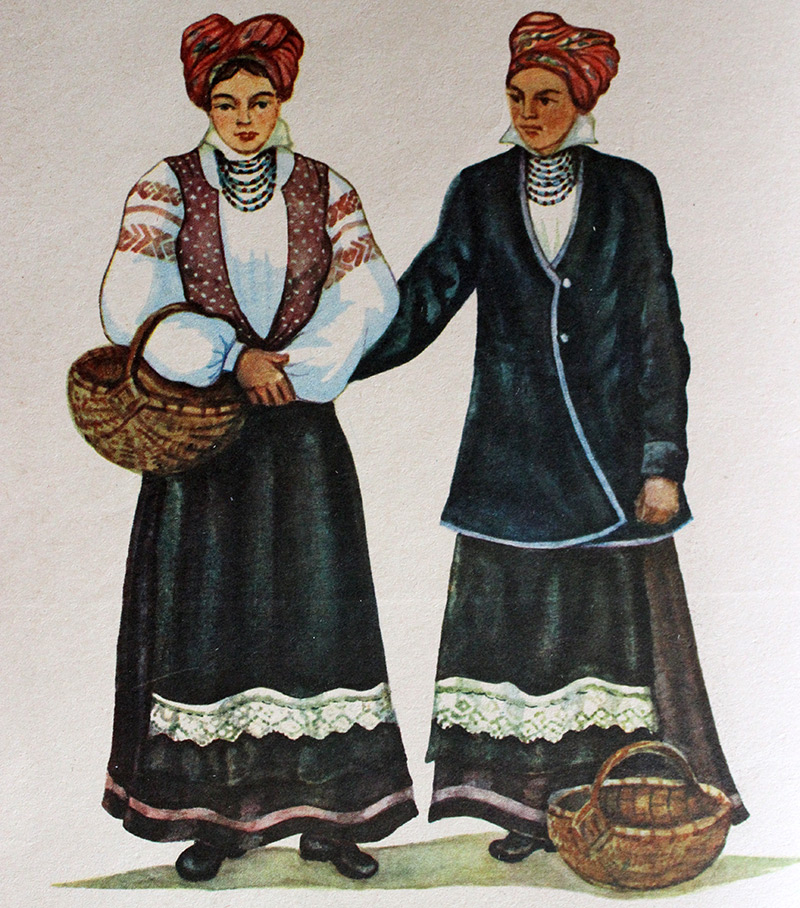
Belarusian folk costume
Illustration from the book
"Belarusian folk clothes", Minsk, 1975
Sleeveless jackets in Belarus were called "garset" or "kabat", there were also such names as "stanik", "captan", "bib". Sleeveless jackets could be either short - up to the waist, or long. In the front, the sleeveless jacket could either be buttoned or laced up.
Aprons were sewn of linen and fastened at the waist with strings. Aprons, like women's shirts, were richly decorated with embroidery - ornaments.
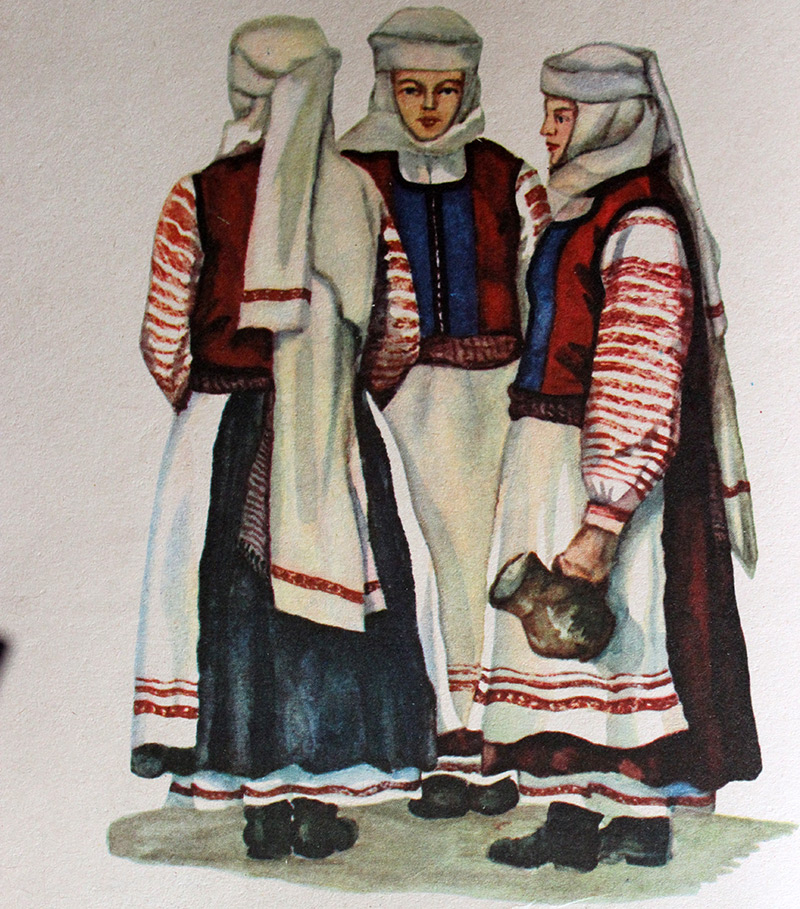
Belarusian folk costume
Illustration from the book
"Belarusian folk clothes", Minsk, 1975
As headdresses, women wore headscarves, bonnets, and namitki. Namitka or basting is the headdress of a married woman. Namitka is a long, up to 3 meters, piece of rectangular fabric that was tied around the head, covering both the head itself and the neck.
Shoes, both for women and men, have been leather since the times of Kievan Rus and the Principality of Polotsk. Since the 19th century, high leather boots have become part of the Belarusian folk costume for men. However, peasants could also wear wicker shoes - bast shoes.
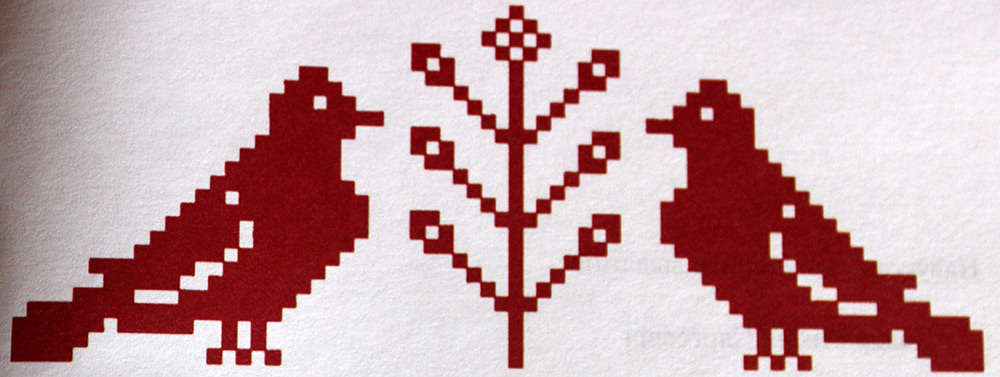
Love symbol
Illustration from the book "Belarusian Ornament", 2024
Ornament
Ornament plays an important role in the Belarusian folk costume. The ornament embroidered both men's and women's shirts, as well as skirts, aprons.
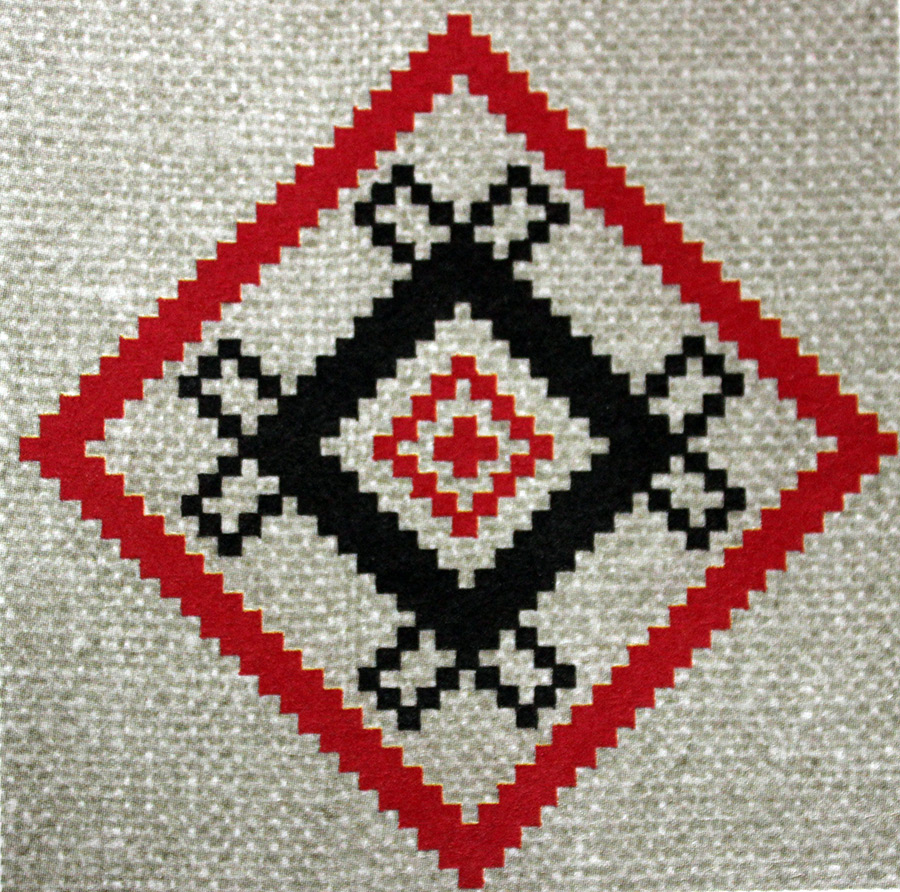
Ancestor symbol
Illustration from the book "Belarusian Ornament", 2024
The symbolism of the Belarusian ornament is quite ancient, preserved from pagan times. Ornamental patterns in Belarus were mainly embroidered with red threads on white fabric - white shirts, aprons, skirts. At the same time, the ornament could be embroidered not only on clothes, but also on towels - towels.
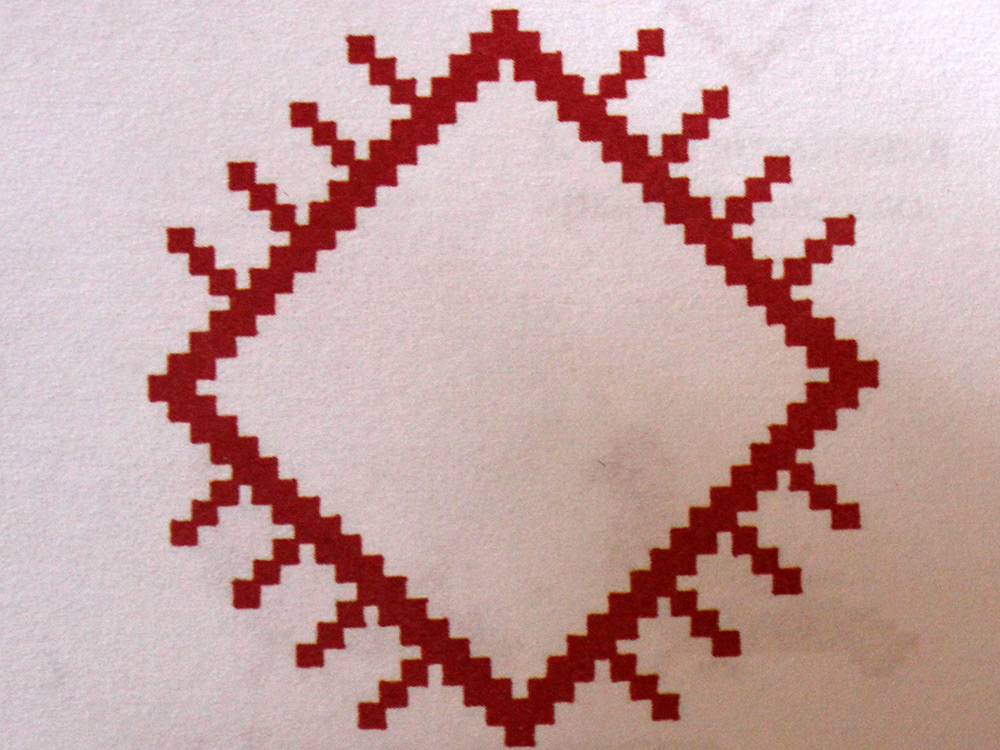
Sun symbol
Illustration from the book "Belarusian Ornament", 2024
Back in the middle of the twentieth century, elderly women in villages remembered that ornamental patterns are not just pictures. Ornament patterns are symbols that carry a certain meaning. Such symbols could be a wish for happiness to the young, or a talisman. There were also symbols associated with the annual cycle and harvest holidays, because the most important thing in the life of peasants is the sun and bread. Also, among the ornament patterns, there were symbols associated with funeral rites.
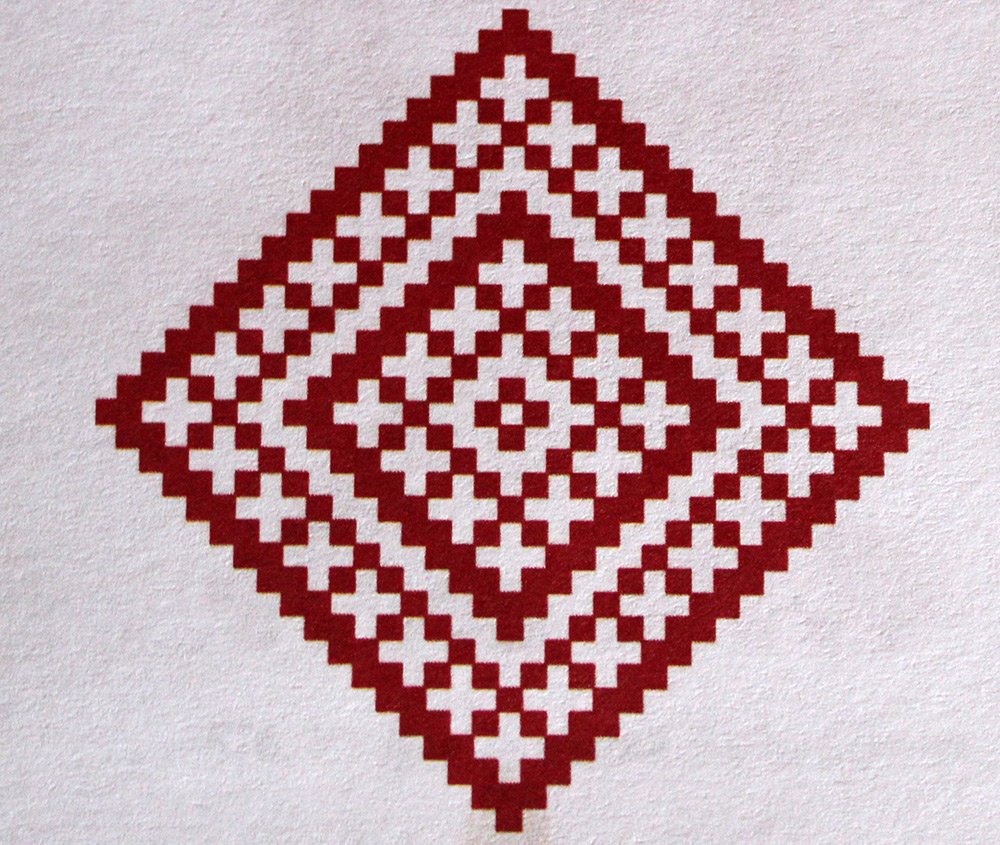
Bread symbol
Illustration from the book "Belarusian Ornament", 2024
By embroidering ornaments on clothes or ruches, craftswomen in ancient times could put together whole sentences from symbols. Put some meaning into the decor of the costume. And thus, for the peasants, the ornament served not only as an ornament, but also as a spell and amulet.
Comments and Reviews
Add a comment
Rating news
Shades of clothing that make women look younger
What shades of hair make women younger: rules and photos
Funny wedding dresses - photos and ideas
12 most expensive down jackets for the winter
How to look 25 at 40: tips from supermodels
Beautiful schoolgirls
Anti-aging haircuts and hairstyles for women
Fashionable skirts for autumn and winter
Fashionable women's trousers for the cold season
Fashionable and stylish sandals for summer 2024
Spring-summer 2024
 Fashionable dresses and tops with thin spaghetti straps
Fashionable dresses and tops with thin spaghetti straps
 Bandana tops: how to wear stylishly and beautifully
Bandana tops: how to wear stylishly and beautifully
 How to put together the perfect men's wardrobe for the summer
How to put together the perfect men's wardrobe for the summer
 Fashionable shorts for spring-summer 2024
Fashionable shorts for spring-summer 2024
 Fashionable skirts for spring-summer 2024: a guide to online shopping
Fashionable skirts for spring-summer 2024: a guide to online shopping
 The most fashionable dresses spring-summer 2024: styles and colors
The most fashionable dresses spring-summer 2024: styles and colors
 Fashionable total look 2024: image ideas and trends
Fashionable total look 2024: image ideas and trends
